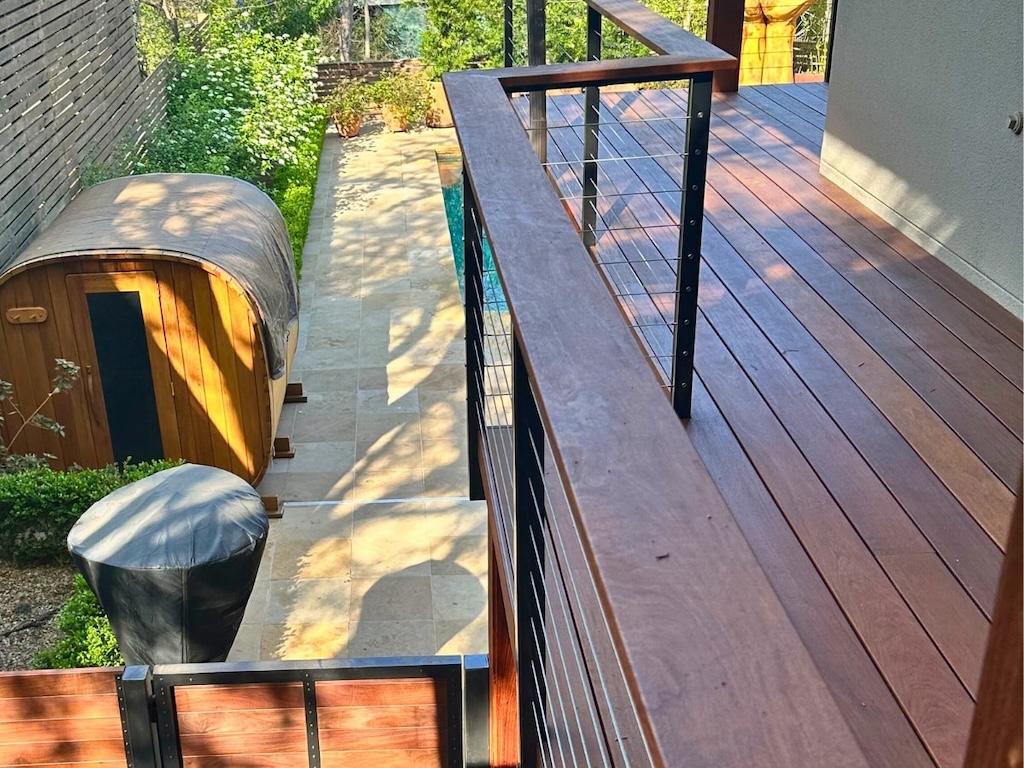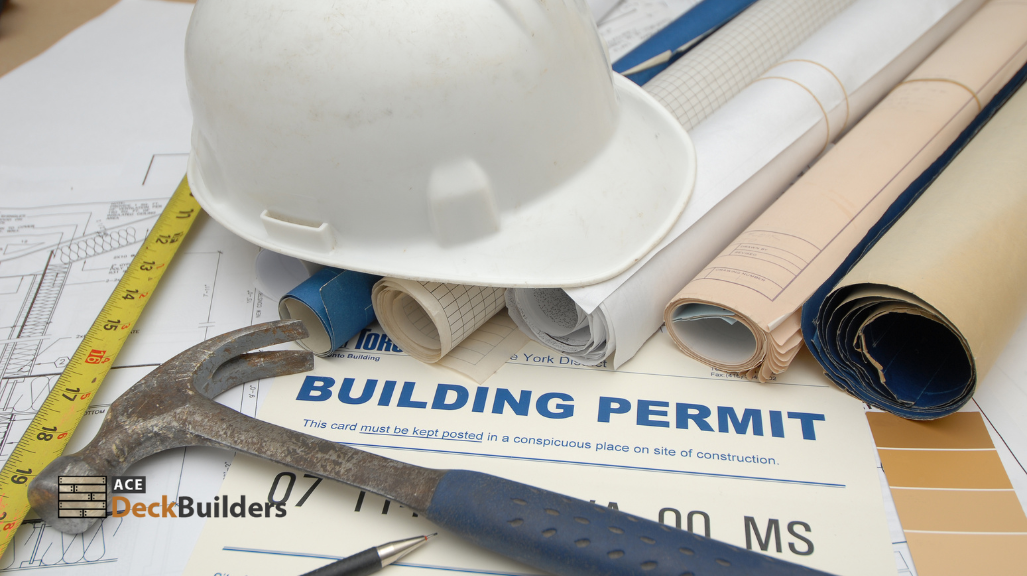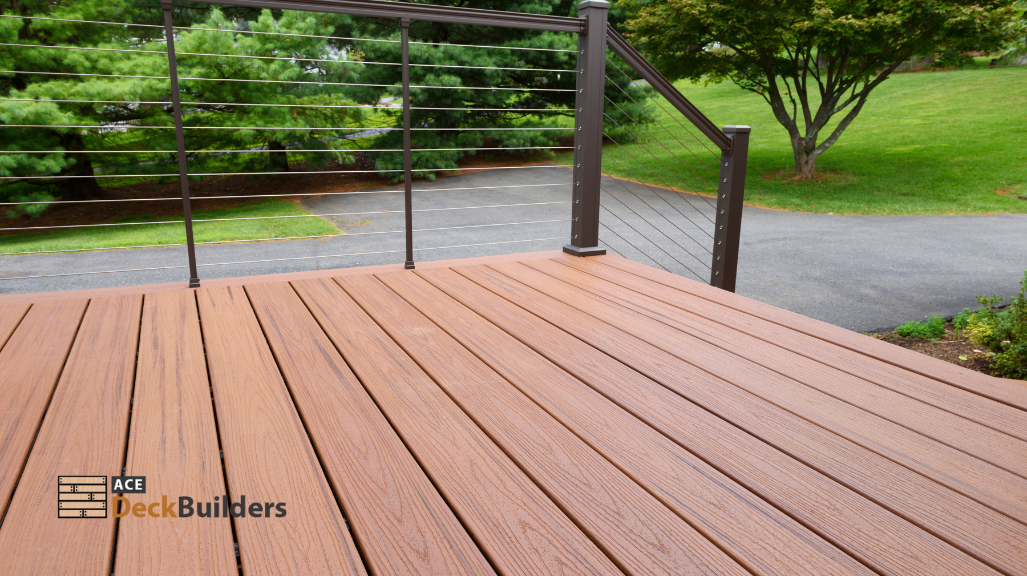TL;DR
Deck estimate pricing isn’t random. In Austin, the cost depends on scope complexity, deliverables (simple quote vs. design packet), permit/HOA research, site factors (access, slope, utilities), and professional time (measuring, engineering coordination, 3D modeling). Free “walk-and-talk” quotes are fine for straightforward builds; detailed, paid consults make sense when you want drawings, options, and pricing you can bank on. If you’d like a baseline for quality and process, scan the project standards on Ace Deck Builders.
Table of Contents
ToggleWhy Deck Estimates Aren’t All the Same

“Estimate” can mean anything from a quick ballpark text after a few photos to a fully documented proposal with plan views, 3D renders, line-item pricing, and a schedule tied to inspection hold points. The gap between those two ends is hours (sometimes days) of professional work—and that’s why some deck builders reserve the most in-depth estimating and design time for paid consults.
A realistic mindset: you’re not only buying a number; you’re buying clarity and risk reduction for your outdoor living space . The richer the deliverable, the fewer surprises later.
Free vs. Paid Estimates: When Each Makes Sense
Free (walk-and-talk) estimates are perfect when:
- The deck is simple (single level, standard stairs/rails).
- You already know the material tier (e.g., mid-range composite).
- You don’t need HOA-ready drawings or 3D visuals to decide.
- Your yard is straightforward (flat’ish, normal access).
Paid design/estimate consults are worth it when:
- You want option sets (cedar vs. composite vs. PVC) with side-by-side pricing.
- The site is tricky (slope, trees, easements, tight access).
- You’ll submit to a strict HOA and want a clean, one-pass approval.
- You need 3D views, engineered details, lighting layouts, or an accurate schedule tied to inspections.
- You’re comparing multiple bids and want a spec you can hand to anyone (apples-to-apples).
Paid consults often become credited retainers when you move forward—ask if the fee rolls into the project.
The 10 Biggest Cost Drivers in Austin
- Scope Complexity
Multi-level layouts, multiple stair runs, picture-frame borders, divider boards, privacy screens, and specialty rails increase measure/design time. - Deliverables Depth
A one-page line-item quote takes far less time than a packet with plan/elevation views, 3D renders, and option pricing. - Material Scenarios
Pricing two or three material paths (cedar vs. composite tiers vs. PVC) multiplies takeoff time: different spans, fasteners, ventilation notes, and rail compatibilities. - Permit & Code Research
If the builder needs to pre-validate footing assumptions, ledger details, and setbacks, that adds office time—especially when you’re near utilities, greenbelts, or floodplain flags. - HOA Submission Requirements
Some Austin-area HOAs want color swatches, plan views, elevations, and exact product lines—not “generic gray composite.” Producing HOA-ready packages takes time. - Engineering Touchpoints
Elevated decks, rooftop concepts, spas, shade structures, and long spans may require engineer input. Even a quick feasibility check adds coordination time. - Site Access & Measuring
Tight side yards, gate restrictions, and multi-flight measuring (existing decks) add field time. Laser measurements and photo mapping are accurate—but not instant. - Utilities & Add-Ons
Lighting, GFCI outlets, and gas for kitchens need licensed subs. Estimating those scopes involves parts selection and trade coordination. - Schedule Modeling
If you want a Gantt-style plan with permit lead time and inspection hold points, expect more effort up front—but fewer surprises later. - Turnaround Speed (Rush Requests)
Compressing a two-week design/estimate cycle into a few days often requires overtime and jumps the queue—some firms charge for rush handling.
Deliverables Menu: What You Can Ask For
Think of estimate packages like tiers. Pick what matches your decision need:
Tier 1: Quick Quote (usually free)
- Ballpark or single-option price
- Short scope description
- High-level material/spec notes
Tier 2: Standard Proposal (often free, sometimes deposit) which includes decking material options.
- Site visit and measurements
- Plan view with major dimensions
- Line-item pricing (framing, decking, rails, stairs, fascia/skirting, lighting)
- Allowances + exclusions
- Target schedule window
Tier 3: Design & Bid Packet (commonly paid, often credited)
- Plan + elevation views
- Option pricing (e.g., mid-range composite vs. PVC)
- 3D render(s) for HOA/homeowner visualization
- Preliminary permit notes (footings, ledger, spans)
- Draft Gantt with inspection hold points
- Document set suitable for apples-to-apples bidding
If you’re HOA-bound or juggling material choices, Tier 3 for your deck project saves time later—and can reduce change orders.
How Permit & HOA Research Changes the Effort

Good builders don’t guess. For many Austin replacements or upgrades, someone must verify:
- Setbacks & easements on your lot survey
- Footing depth/diameter assumptions for soil and loads
- Ledger feasibility and moisture management paths
- Rail/stair code chances (especially on multi-level or elevated designs)
If you need an HOA submittal, the estimator may compose a packet with pressure treated series names, color chips, and elevations.—the difference between a one-week approval and a painful back-and-forth.
Want to see how a pro designs around these requirements in a real project sequence? Read the overview of deck installation in Austin to understand drawings, submittals, and inspection milestones from a builder’s perspective.
Site Factors That Expand Estimate Time
- Slope & drainage patterns that influence footing count, beam heights, and stair runs
- Existing-condition surprises: hidden rot, undersized framing, inconsistent ledger connections
- Tree roots & rock that can change footing assumptions
- Tight access for material staging and demolition haul-off
- Pool proximity requiring stainless hardware and slip-aware surfaces
- Sun exposure driving different material recommendations and shade strategies
A field walkthrough that documents these items is often the difference between a guess and a plan.
If your deck is aging and you’re unsure whether to rebuild or tune up, it’s smart to read about deck inspection in Austin to see how pros prioritize safety and code before scoping cost.
How to Lower Estimate Cost (Without Losing Quality)
- Share good inputs up front
Send recent photos, a lot survey (if you have it), and rough dimensions. Note where the sun hits hardest and any known drainage issues. - Decide your “lane” early
Choose one primary material path (e.g., mid-range composite in a light tone) and one backup, rather than three or four wildcards. - Standardize specs for bidding
If you’re asking multiple firms to bid, give them the same scope template (rail length, stair count, fascia/skirting coverage). It cuts back-and-forth and produces comparable numbers. - Batch changes
Collect your edits and send them once rather than drips. Every email volley adds internal rework time. - Pick in-stock components
Asking for unicorn trims and custom rails increases design/estimate labor—and later, schedule risk.
What a Professional, Reliable Quote Looks Like

Expect clarity in writing:
- Plan view with key dimensions (even a simple sketch helps you visualize)
- Line-item pricing for framing, decking, rail system, stairs, skirting/fascia, lighting
- Hardware details (post bases, fasteners, ledger flashing)
- Allowances for unknowns (rock excavation, hidden rot, extra piers)
- Exclusions (irrigation repair, landscaping, furniture)
- Schedule notes with inspection hold points (footing, framing, final)
- Warranty terms (workmanship + manufacturer coverage)
- Next steps and validity window for the quote
This kind of estimate isn’t just a number; it’s a project roadmap.
Pricing still fuzzy because you’re early in planning? For broader context on materials and scope ranges, skim an Austin-specific breakdown of how much it costs to build a deck so your expectations match market realities.
FAQs
Not automatically. Free estimates can be great for simple scopes. Paid consults make sense when you need detailed drawings, option pricing, deck costs HOA-ready packets, or an engineered path you can shop around.
Three serious, comparable bids are usually enough. Past that, you’ll spend more time reconciling scope mismatches than saving money.
Ask if the retainer is credited toward the build and whether you own the drawings if you don’t proceed. Many firms credit the fee and allow a limited license to compare bids.
Some teams do—compressing design and estimating requires overtime. If you’re under a deadline (home sale, event), say so early.
Photos, rough dimensions, deck size, lot survey if available, HOA rules, a sense of material preference, and any must-have features. (privacy, shade, lighting, kitchen).
Get a Clear, Useful Estimate
Want a decision-ready estimate with line-item pricing, material options, permit notes, and a schedule tied to inspection hold points? Start with a free estimate for your new deck in Austin—we’ll gather the right inputs, show you heat/UV trade-offs, and deliver a plan you can trust.
